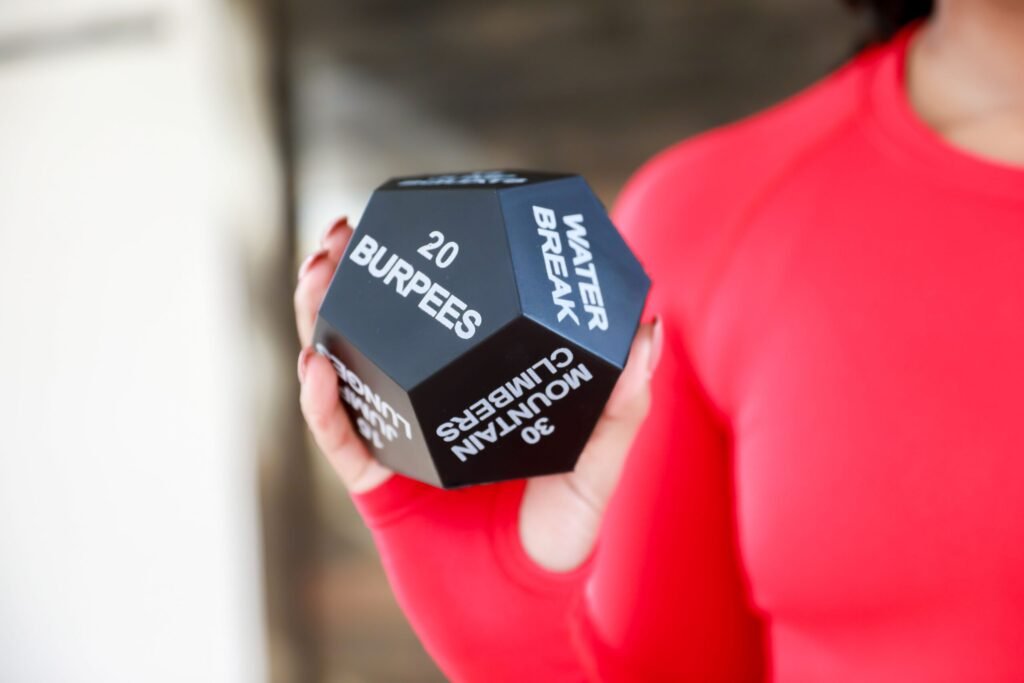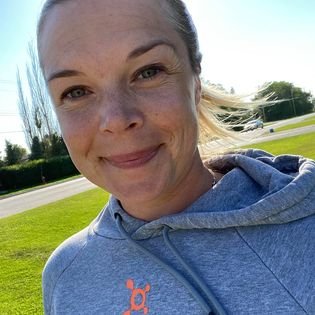The game changes as you age, in many ways. What once worked to help you look and feel your best, may not be the same now (or in the near future). Similarly, what your body needs nutritionally, or can handle in terms of physical activity, has likely also changed. So if you’re done banging your head against the wall trying to figure out how to maintain a strong, healthy, and energetic body that you feel confident in over 40 years of age, this will help you!
How do I know it will help you? I know because I’ve seen it work first-hand for others, and I also have personally achieved the weight range and level of energy I’ve been working towards for years…just by focusing on these things. Read on!
2 Simple Steps to Fitness Over 40
These steps are simple, but whether or not you take them to heart and DECIDE to take ACTION, will ultimately change the trajectory of your life…or not.
Here they are.
STEP 1 – Learn to consume macronutrients with proper balance
STEP 2 – Build muscle
I know it may seem like I’ve over simplified it, but it does not need to be complicated. The truth is that it will take unlearning some habits that you’ve acquired over the years which are not serving your health, or your happiness, at this time. What it really boils down to is a back-to-basics approach of consuming key nutrients that your body requires to function at an optimal level, and setting aside a relatively small bit of time each day to build muscle.

Action Steps
Making a shift to a lifestyle that will bring you more energy and confidence begins with you deciding to make some changes. Next comes committing to the actions that you know are in alignment with how you want to live your life. If you truly want to feel healthy, you must decide and commit.
Although I’ve laid it out as 2 steps, it doesn’t need to be implemented in any order. In fact, sometimes it’s best to just start with either fitness OR nutrition and focus on one at a time. This way, you can funnel your energy and focus into creating success in shifting your habits in one area, until you’re feeling more successful and confident, and then layer on the second element. Meaning, you may start by focusing only on nutrition, and once you’ve got a good handle on that, add in the fitness piece and continue with your new nutrition regimen too. Or you may choose to begin with fitness and layer on nutrition once you’re in a good groove with the workouts. The last option is to go whole hog and do it all together! Bottom line, do what make sense to you.

Balancing Macronutrients
To achieve your best health, stop focusing on trying to lose weight. There, I said it. The goal is good health, and the way to get there is by creating better nutritional habits and building muscle.
These better nutritional habits are based on a foundation of science. Our bodies are designed to function optimally when we eat nutrient-dense foods that are made up of complex carbohydrates, healthy fats, and protein, as well as a wide range of micronutrients (vitamins and minerals) required in smaller amounts. Weight loss will be a natural by-product of eating healthfully, and so will greater levels of energy, healthy glowing skin, a stronger body, and overall vitality (these are the real prize)! When you find the right balance for you, you will find that it is easier to build lean muscle, lose fat, and subsequently lose weight. Sounds great, right! So work on that mindset shift that it’s about the habits, not the weight loss.
The amount of carbs, protein and fats that any individual needs to consume in a day depends of a few factors such as your resting metabolic rate, age, gender, activity level, etc. I won’t deny that it can get a little complex if you’re tying to calculate the exact proportion of proteins, fats, and carbs to consume on a daily basis, which is why I suggest an easier, and more flexible approach to balancing macros. Focus on eating enough protein and just eat whole foods in general. Meaning, eat REAL natural foods, and keep an eye on portion sizes. There’s a plethora of resources on the internet and pinterest, apps galore, ready-made macro meal plans, and tons of programs out there – enough to make your head spin. So if you want to get technical about it, explore the options and pick one that feels like something you could realistically do. It is a great way to learn what balancing macros looks like in practice.
But if you’d rather go the simple route, like me, just learn what category foods fit into and eat real, whole foods in reasonable portion sizes. A base-line to start with for macros (just to give you an idea) is consuming roughly 40% of your daily food intake from complex carbohydrates, 30% fats, and 30% protein (see lists below).
Eating 5 smaller meals a day has shown to boost metabolism and regulate blood sugars. For you, this translates to fewer cravings, feeling full, and fat loss. So spread your food intake throughout the day into 5 smaller meals to maintain a more efficient metabolism. You can easily look up the amounts of macronutrients in whole foods, or let an app like myfitnesspal calculate and track it for you.

Protein List
- whole eggs (3 large)
- egg whites (6 egg whites)
- skinless boneless chicken breast (4 oz.)
- turkey breast (4 oz.)
- lean beef (4 oz.)
- turkey bacon (4 slices)
- ham (4 oz.)
- shrimp (4 oz.)
- tuna (4 oz.)
- bison (4 oz.)
- pork (4 oz.)
- halibut (4oz.)
- salmon (4 oz.)
- cod (4 oz.)
- tempeh (3/4 c.)
- whey protein powder (2 scoops)
- Greek yogurt (3/4 c.)
- cottage cheese (3/4 c.)
- milk (1 c.)
- lentils (3/4 c.)
- quinoa (3/4 c.)
- almonds (23)
- chia seeds (3/4 c.)
- edamame (3/4 c.)
- peanut butter (2 tbsp.)
- peanuts (28)
- beans (3/4 c.)
- legumes (3/4 c.)
- pumpkin seeds (3/4 c.)
- cashews (18)
- chickpeas (3/4 c.)
- veggie burger (1 med.)
Complex Carbohydrate List
- Any fresh fruits and vegetables (1 c.)
- brown rice (1/2 c. cooked)
- jasmine rice (1/2 c. cooked)
- red potatoes (1/2 c.)
- sweet potatoes (1/2 c.)
- yams (1/2 c.)
- parsnips (1/2 c)
- squash (1 c.)
- corn (1/2 c.)
- whole grain bread (1 slice)
- ezekiel bread (1 slice)
- oatmeal (1/2 c. cooked)
- whole wheat pasta (1 c. cooked)
- raisins (1/4 c.)
Fats List
- avocados (1/4 med.)
- walnuts (8 halves)
- almonds (12 whole)
- pistachios (20 whole)
- nut or seed butters (2 tbsp.)
- pecan (10 halves)
- olives (10 small)
- olive oil (1 tbsp.)
- coconut oil (1 tbsp.)
- canola oil (1 tbsp.)
- ground flaxseed (1/4 c.)
- sunflower seeds (1/4 c.)
- chia seeds (1/4 c.)
- sesame seeds (1/4 c.)
- hemp seeds (1/4 c.)
- hummus (1/2 c.)
- dark chocolate (1 oz.)
- cheese (1/4 c.)
- salmon (4 oz.)
- tuna (4 oz.)
As I said, eating whole foods (like the ones in the above lists) is key – without too much worry about how much of this and how much of that. If you try to consume a good balance of food off each category list in the suggested amounts, chances are you’ll be better off than where you were before!
Building Muscle
If you are not a huge fan of cardio, then you’re going to like what I have to say. You don’t need to bust your booty with grueling 60-minute cardio sessions everyday to get your body into peak condition. If you spend somewhere between 20-45 minutes 4 times a week building muscle, your body will start to feel and look the way you want it to (in addition to eating the whole foods we just talked about).
I believe that it is entirely possible to achieve a lean physique through High Intensity Interval Training (HIIT) 4 times a week, with 20 minutes a session – especially when you’re on the right track with balancing macros. HIIT workouts provide a good mix of strength training, and cardiovascular training, and since the intensity level is higher than steady state cardio, the duration can be shorter…AND your body will continue to torch fat long after the workout is over!

My favorite free app for HIIT workouts is the Nike Training Center app. There is a great variety of free workouts on this app, including varying lengths of HIIT workouts. There are SO may options out there, and every person will have their preference as to whether they workout at home or in a gym, or in a group fitness class, etc…so choose what makes sense for you, and what will be sustainable in the long-run.
As a former personal trainer and Orangetheory fitness coach, I believe that the key to sticking with any fitness routine is to do what works for you. If you do enjoy a high-energy fitness environment and working out with others, that is exactly what you’ll get at Orangetheory. Note that I am no longer a coach, and do not benefit from recommending Orangetheory, my goal is simply to give you some options that I believe will help you. The workouts at Orangetheory are a combination of strength and cardio that target an optimal heartrate for burning fat, known as the “orange zone”. The coaches will also support you in the strength portion of the workout with proper form and to select weights that will allow you to build muscle. These are mostly 60-minute workouts that are sure to get you on the right path towards building muscle and burning fat!
There are many many options out there…just search HIIT workouts online and find one that looks good to you. Bottom line once again, do what works for you and start building muscle!
Lastly, if you’re looking for medically backed support for building lean muscle, check out dr. Gabrielle Lyon. In her new book, Forever Strong, she provides her professional medical insights as to why ‘muscle-centric medicine’ is the key to aging in good health. I highly recommend checking her out.
Thank you for reading.
xo Chelsey






Hi, this is a comment.
To get started with moderating, editing, and deleting comments, please visit the Comments screen in the dashboard.
Commenter avatars come from Gravatar.